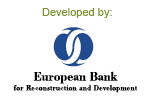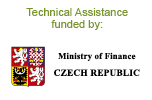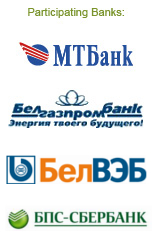Eligible borrowers shall meet the following requirements:
- be private sector companies that must be private enterprises, firms, businesses, sole proprietors or other private legal entities formed under the laws of the Republic of Belarus and operating in Belarus - including Energy Service Companies (ESCOs) and leasing companies (including bank’s subsidiaries), provided that the project financed by such companies complies with the project criteria, or
- be public sector companies, i.e. majority-owned or controlled by the state of Republic of Belarus or by any other corporate, political, governmental or administrative body, agency or sub-division majority-owned or controlled by the state of Republic of Belarus.
Public sector companies must:
- be creditworthy, operate in a competitive market environment and satisfy the EBRD established criteria of commerciality of state-owned entities, which will be verified by EBRD and Project consultant for every project, and
- use the proceeds of loans to finance solely contracts with private sector companies in implementation of eligible projects (such proceeds to be disbursed directly to the private sector companies contracted by the public sector companies);
- meet the participating bank’s credit criteria and be approved in accordance with its credit appraisal procedures;
- apply procurement rules in accordance to the EBRD’s Procurement Policies and Rules (PPR);
- be either in compliance with the national environmental, health and safety and labour legislation in Belarus or agree to address any areas of non-compliance (with such agreement to be reflected in the relevant project agreement);
- not be engaged in production, marketing, distribution (or similar activity) of tobacco products, hard liquor, alcohol (other than breweries, wineries and other companies manufacturing low/medium alcohol beverages), gambling, arms and activities listed on the EBRD Environmental Exclusion and Referral List; and
- without prior written approval of the EBRD, not finance any environmentally or socially sensitive business activities listed on the EBRD’s Environmental and Social Referral List.
What types of sectors / projects are eligible for Financing under BelSEFF?
Industrial sector
Energy efficiency projects with private or public industrial companies include restructuring, upgrading and modernization of demand side industrial assets;
Commercial building sector
Energy efficiency projects in buildings that are used for commercial purposes. Types can include office buildings, warehouses, or retail (i.e. convenience stores, shopping malls, etc.).
Requirement: For industrial and commercial building projects, the minimum energy saving effect from the project in physical terms per unit of output should be not less than 20% as compared to the baseline.
Stand-alone renewable energy projects
Eligible renewable projects with private companies include small scale generation of electricity and heat from renewable resources.
Requirement: Eligible renewable energy projects shall have a positive Net Present Value calculated over a ten-year period by using an 8% discount rate applied to the underlying cash flows denominated in hard currency..
Loans for “Energy Efficiency Suppliers”
This type of eligible projects encompass a supply capacity enhancement for eligible manufacturers, suppliers and installers of energy efficiency and renewable energy technology, equipment and materials.
Working capital financing to Energy Efficiency Suppliers to finance raw materials or intermediate goods, when there is a firm order for Eligible Energy Efficiency and renewable energy equipment to be manufactured is included.
LEMI/LESI
Small scale projects (loans under USD 400.000) can be approved using the List of Eligible Measures and Equipment (“LEME”) and List of Equipment Suppliers and Installers (“LESI”) and under the special approach. The aim of this approach is to speed up and simplify the procedures for smaller energy efficiency projects.
The LEME is an indicative open list of eligible materials and equipment capable of achieving the minimum 20% energy savings compared to technological norms in the local market. The LESI consists of suppliers and installers having necessary registration for activities in Belarus. These Lists you can find in the special Section of the website.
List of Eligible Project Types
Industrial Sector
Eligible projects in industrial sector may include, but are not limited to:
- Replacement or modernization of energy-intensive process equipment (furnaces, ovens, dryers, heat treatment equipment, presses, etc.);
- On site co-generation of heat and electricity;
- On site tri-generation of heat, electricity and cooling;
- Replacement or rehabilitation of boilers (enhanced controls, economizers, improved insulation, regenerative burners, automatic blow-down, etc.);
- Switch from electricity heating to fuel based direct heating;
- Process improvements including enhanced controls;
- Rehabilitation of steam distribution systems: installation of steam traps, increased condensate recovery, etc.;
- Installation of heat recovery from processes (e.g., installation of economizers for pre-heating purposes, heat recovery for space heating, heat recovery for drying, etc.);
- Upgrade of an existing air ventilation system/ air conditioning;
- Installation of more efficient chillers;
- Installation of Variable Speed Drives on selected electric motors;
- Rehabilitation of compressed air systems (e.g., decentralization and/or resizing of air compressors, replacing of old air compressors with new efficient ones);
- Rehabilitation of power distribution systems (e.g., replacement of old or oversized transformers, installation of capacitors to reduce reactive power consumption, etc.);
- Implementation of Energy Management Systems or Building Management Systems;
- Utilization of renewable energy sources as a part of the energy efficiency projects to produce electricity, heat, cooling;
- Implementation of energy saving measures in industrial/ office buildings (e.g., insulation of walls, roofs and floors; installation of rolling doors; installation of new windows; installation of new heating systems, upgrade of existing ventilation/ air conditioning systems; installation of high energy efficiency lighting; etc.);
- Production or distribution of EE technologies and materials (energy efficient windows, solar thermal collectors, heat pumps, efficient lighting, air ventilation/air conditioning equipment, efficient motors and drives, energy efficient/condensing boilers, small cogeneration/tri-generation units, waste heat recovery units, etc.);
- Other eligible projects.
Commercial building Sector
Eligible projects in Commercial building sector may include, but are not limited to:
- Replacement of old and low efficient low efficient boilers by new efficient ones with or without fuel switching;
- Implementation of on-site micro-cogeneration/tri-generation;
- Rehabilitation of heat sub-stations and implementation of heat meters;
- Balancing of heating systems, implementation of individual heat control devices;
- Implementation of Energy/Building Management Systems;
- Replacement of existing windows with new, double-glazed windows, low emission glazing;
- Thermal insulation of the building envelope (external walls, roofs, basements);
- Replacement of existing heating system with a new one (thermal insulation of pipe, tanks and machinery equipment);
- Installation of heat recovery from air ventilation system and/or processes (e.g. installation of economizers for pre-heating purposes);
- Replacement of existing low efficient energy using processes (e.g. cooking, washing, drying) with new, high efficient ones;
- Replacement of existing lighting with higher efficient equipment (dimming, daylight sensors, presence sensors, algorithmic lighting, grouping of luminaries);
- Free cooling;
- Compressor replacement/rehabilitation;
- Additional shading (jalousies, structural elements, etc.);
- Frequency modulation of pumps, fans, drivers and motors;
- Variable air-volume air-conditioning systems;
- Installation of rolling doors;
- Implementation of renewable energy systems in buildings (e.g., solar thermal collectors, biomass boilers, geothermal energy utilization for heating and/or cooling with and without heat pump, surface water utilization for heating and/or cooling with heat pump, solar heating and/or cooling);
- Other eligible projects.
Stand-alone renewable energy projects
Eligible projects in stand-alone renewable energy projects may include, but are not limited to:
- Utilization wind energy for electricity generation in individual wind mills or wind park with the capacity up to 10 MW;
- Utilization of hydropower potential for electricity generation in a small hydropower plant (run-off the river and with installed capacity below 5 MW);
- Utilization of biomass for heat production and/or electricity generation with the capacity up to 50 MW;
- Production of biogas (as stand-alone projects or as a part of waste-water treatment plant) including biogas station for gas supply or heat production and/or electricity generation to be used on-site or for distribution;
- Utilization of geothermal energy for heating/cooling;
- Utilization of solar thermal energy for heating/cooling/drying;
- Utilization of solar energy for electricity generation with the capacity up to 1 MW;
- Biomass combustion systems generating heat and/or electricity;
- Use of biogas/landfill gas for gas supply or heat production and/or electricity generation to be used on-site or for distribution;
- Use of heat pumps for heating/cooling/technology processes.
|




